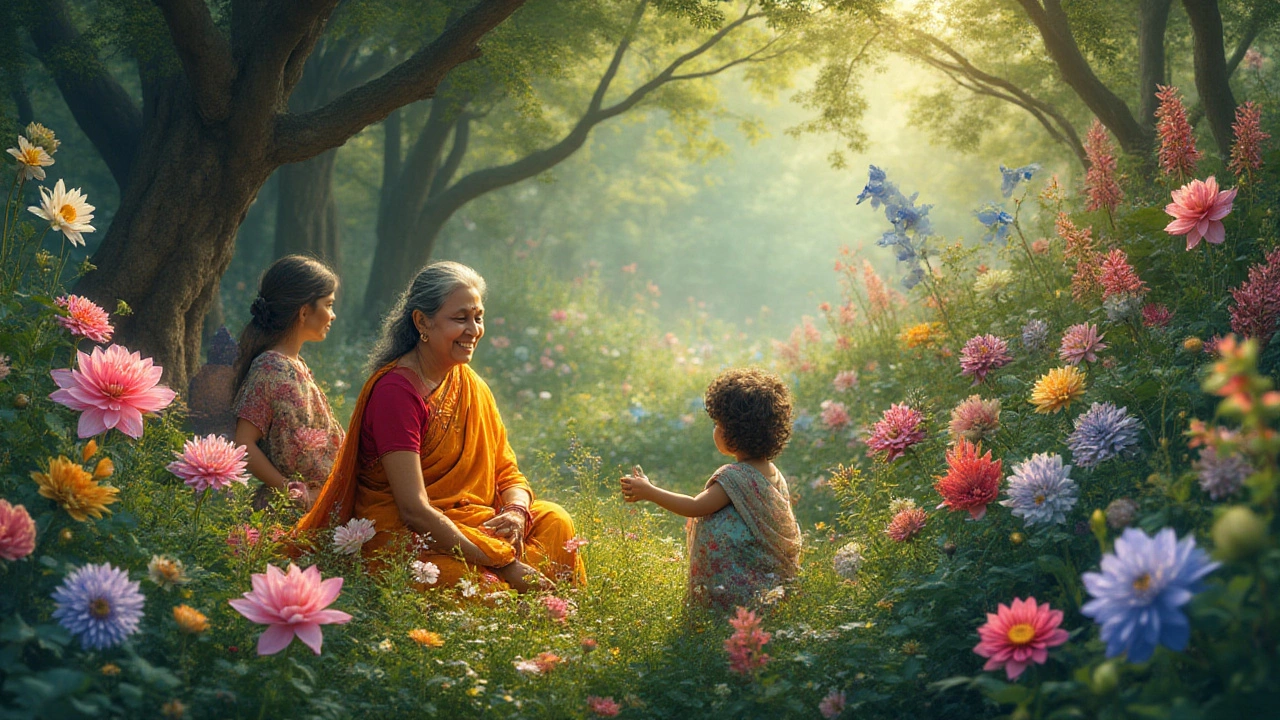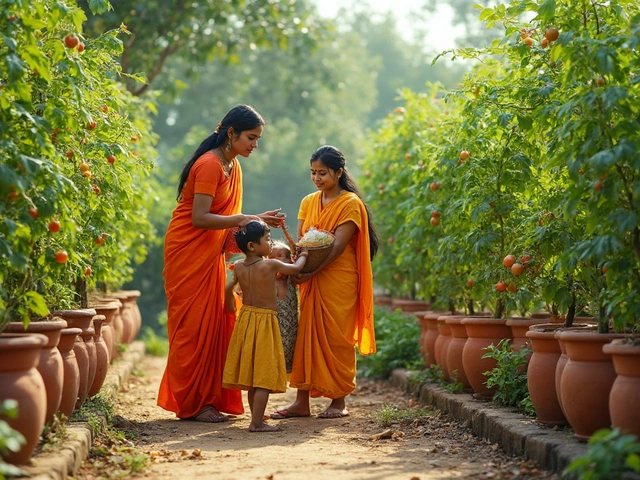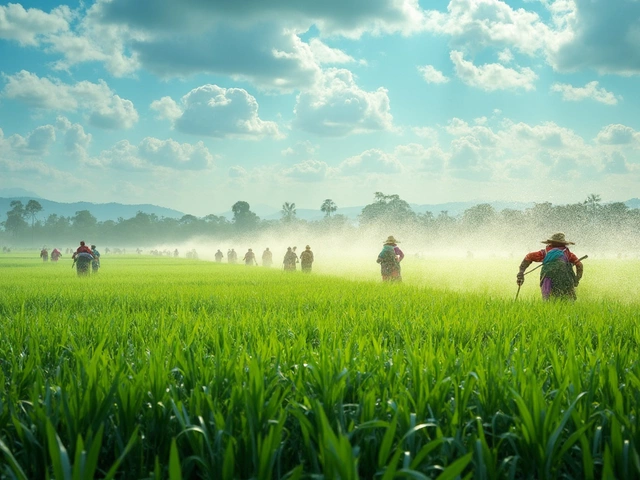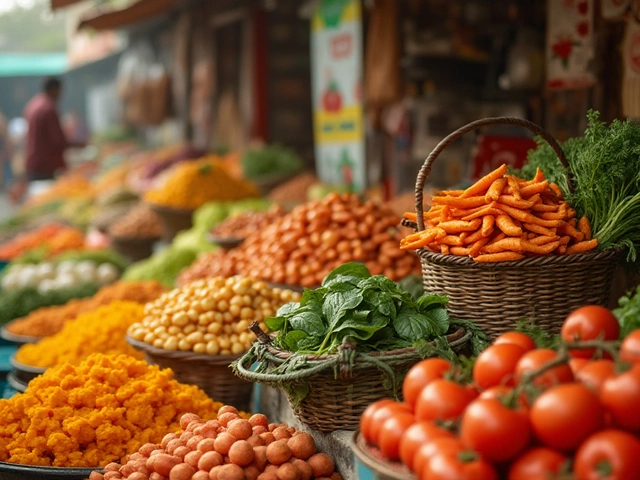Ask a roomful of people to name the most beautiful flower in the world, and don’t be surprised if everyone argues—loudly. One person swears nothing tops the classic red rose, while another claims the elusive blue poppy takes the crown. It’s not just about bright colors or petal count. So many wild stories surround these blooms: some cost more than a new phone, some only bloom for hours, and a couple can even trick you into believing they’re not flowers at all. What really makes a flower beautiful? Money? Rarity? Scent? Or maybe it’s that moment the petals open and you feel like you’re seeing magic for the first time.
The Many Faces of Beauty: What Makes a Flower Stand Out?
Everyone has their own idea of what the most beautiful flower should look like, but let’s get real for a minute—beauty in nature always comes with a story. Some flowers are showy, bursting with color like fireworks. Take the peony. When my friend Liana planted peonies along our front porch, people from three houses down asked about them for weeks. Others prefer the hidden gems, like ghost orchids, which are so rare you could spend your life searching and never spot one in the wild. Orchids in general are record-breakers: the family boasts over 25,000 different species, the most of any plant group. The slipper orchid, for example, manages to look both strange and delicate at once, winning over collectors everywhere.
Then there are the flowers with jaw-dropping scent. Jasmine releases its fragrance in the dead of night, while gardenias remind me of my grandmother’s perfume—memories tied into blossoms. And if you’ve ever grown sweet peas, you know their scent can cut through even the thickest summer air. Some gardeners claim that the old-fashioned rose’s aroma is unbeatable, even better than anything you’ll find bottled in Paris. Beauty also shows up in the wildest places. High up in the Himalayas, blue Himalayan poppies bloom for just a short season, and the local folks see them as pure good luck. One 2019 survey found that the most popular ornamental flower worldwide is the tulip, often due to its simple beauty and rainbow range of colors.
What about shape? Lotus flowers look like living sculptures, floating perfectly on ponds—no wonder artists loved painting them for centuries across China and India. Sunflowers don’t just bring cheer, they literally follow the sun all day, which is a decent trick if you ask me. Even size can blow your mind; the Rafflesia arnoldii holds the record for the world’s largest single flower bloom. It can reach up to three feet across and weighs more than a bowling ball, but it also smells like rotten meat. Weirdly enough, some people find that trait fascinatingly beautiful, proof nature has a sense of humor.
Let’s not forget resilience. Edelweiss flowers survive in snow-streaked mountaintops, and folks used to risk their lives just to pick them for loved ones—that sort of story always adds a layer of beauty. Finally, a splash of context: the rarest flowers often come with the highest price tag, like the Shenzhen Nongke Orchid, which sold for over $200,000 at auction. So when you ask which flower is the most beautiful, there’s no one answer, just a garden full of stories.
Iconic Flowers That Took the World by Storm
Some flowers didn’t just bloom—they stormed through history, changed economies, or inspired myths. Roses are undisputed legends. There’s a reason Shakespeare and poets across centuries wrote lines about their red velvet petals. The ancient Greeks and Romans held feasts where roses rained down from the ceiling, and today, the red rose is code for love almost everywhere. It’s said the Juliet rose variety sells for about $5 million a batch, making it the priciest ever bred.
Tulips triggered one of the first real economic bubbles. In 17th-century Holland, a single tulip bulb might have been worth the price of an entire house, until the bubble burst in 1637. That story turned the tulip into a symbol of beauty and financial risk—a weird combo, but there it is. Modern-day tulip festivals in Holland see more than 1.5 million tourists each year.
Cherry blossoms are the pride of Japan, as anyone who has seen hanami (flower-viewing festivals) can tell you. For a brief week in spring, the world turns pink and white, and people stop what they’re doing just to be near those delicate petals. A single cherry tree can have as many as 375,000 blossoms, and cities plant them just for this annual spectacle.
Let’s not forget the orchid, which has sparked some of the world’s most intense flower obsessions. The vanilla orchid is the reason vanilla ice cream exists. Meanwhile, the black orchid—not actually black but a deep purple so dark it looks black—gets a place on every elusive flowers list. Striking looks and the thrill of the hunt make orchids a global favorite.
The lotus flower has deep symbolism—purity, rebirth, and resilience, because it rises clean out of muddy ponds. Entire religions and art forms are built around the lotus. Monet painted water lilies more than 250 times, and those paintings keep breaking auction records 100 years later. When you hear of a sunflower field that covers 2,000 acres in Spain, drawing photographers and families alike, you realize some flowers just pull us in—from Paris to Peoria.
| Flower Name | Region of Origin | Famous Fact |
|---|---|---|
| Rose | Asia, Europe | Most popular flower for Valentine’s Day (224 million produced yearly) |
| Tulip | Central Asia, Holland | Central to Tulip Mania in the 1600s |
| Cherry Blossom | Japan | Sakura festivals draw millions |
| Lotus | Asia, Australia | National flower of India and Vietnam |
| Orchid | Worldwide, mostly tropics | 25,000+ species—record-holder among flowering plants |
| Sunflower | North America | Largest commercial sunflower field: over 5,000 acres |

Rare Beauties and Unique Blossoms
Some flowers are so rare or weird-looking, you might think someone made them up in a sci-fi movie. Blue poppies, for example, only grow wild in a few Himalayan valleys. You can try growing them at home, but they can be tricky—prefer cool summers, hate soggy soil. If you ever visit Bhutan or Tibet, keep your eyes peeled but don’t get your hopes too high.
The jade vine is another stunner, hanging like green-blue chandeliers in the Philippines’ rainforests. Its color doesn’t look natural; people swear it’s Photoshopped, but it’s the real deal. In the cloud forests of Ecuador, the Dracula orchid (yes, that’s the real name) gets its name from its face-like pattern and long, fang-like petals. Gives you the urge to examine it up close, trust me.
The corpse flower, or Amorphophallus titanum, makes headlines every time it blooms, partly for its enormous size (often over six feet tall) and partly because, honestly, it smells like a garbage dump. At the same time, folks stand in line just to see (and smell!) this giant at places like New York’s Botanical Garden, where it blooms just once every several years.
Even closer to home, some flowers are rare because they’re old-fashioned rather than impossible to find. Heirloom sweet peas, antique roses, or double tulips—try searching flowers catalogs, and you’ll realize some gorgeous varieties are nearly gone except for a handful of loving gardeners.
Then you’ve got mysterious “ghost” flowers. The ghost orchid doesn’t even have regular leaves; it looks like a white, floating insect. Native to Florida’s swamps and the Caribbean, people pay guides big money just to catch a glimpse of one in bloom. In South Africa, the Protea cynaroides (King Protea) claims the largest flower head in the Protea family; it’s pink, spiky, and looks like something out of a graphic novel. Gardeners and plant hunters alike keep chasing these rare beauties, proving that rarity often equals desirability.
How to Grow Stunning Flowers in Your Own Garden
You don’t need to travel the world or spend a fortune to grow beautiful flowers—and sometimes, the most gorgeous blooms are the ones you grow yourself. Here are my top practical tips, straight from years battling weeds and deer in my own backyard (with a few lessons learned the hard way).
- Pick the right spot: Sunlight is non-negotiable for most flowering plants. At least 6 to 8 hours a day, and if you miss this step, even the finest seeds won’t help much.
- Test your soil’s pH and fertility—flowers like roses prefer slightly acidic, peonies do better in rich, neutral soil, and tulips demand good drainage. A basic test kit costs less than a fancy bouquet, and pays off for years.
- Don’t always buy from the big box. Local nurseries and plant sales often carry interesting, healthy varieties. Last summer, I found a hard-to-find heritage dahlia at a church sale for under $5.
- Mix in perennials (like peonies and lilies) with annuals (like zinnias or cosmos). Perennials come back year after year, while annuals keep the color show going strong until frost.
- Pay attention to bloom time. If you plant only spring bulbs, you’ll get a glorious show… then months of green leaves. Try staggering bloomers for a garden that never feels empty.
- Got clay soil? Add compost and sand. Sandy soil? Work in organic matter. For containers, use fresh potting mix every season—a small change that makes a shocking difference.
- Water deeply, but less often. Most established flowers need a good soak about once a week, not a little spray every day. Always water in the early morning or late evening to avoid losses to evaporation.
- If pests are a problem, pick flowers that can take some abuse—marigolds, daylilies, and coneflowers are tough as nails. You can also stash sacrificial plants, like nasturtiums, to draw pests away from prized blooms.
- Deadhead faded flowers to encourage more blooms. This is soothing (and a lot less work than pulling weeds).
- For show-off blooms, try dahlias, sunflowers, and gladiolus—huge, dramatic flowers that make neighbors stop and stare.
Even if you only have a balcony or windowsill, you’re not out of luck. Miniature roses, violas, or even dwarf sunflowers do well in pots. When my wife Liana and I first moved in together, we grew nasturtiums in old coffee cans—colorful, edible, and basically foolproof.
If you love a particular flower, join a grower’s club or online group—people love swapping tips, seeds, and the odd story about a disaster turned into triumph. Whatever you grow, keep experimenting. Gardens aren’t static. Your tastes might change next year. That, in itself, keeps the hobby as fresh as a newly opened bloom.
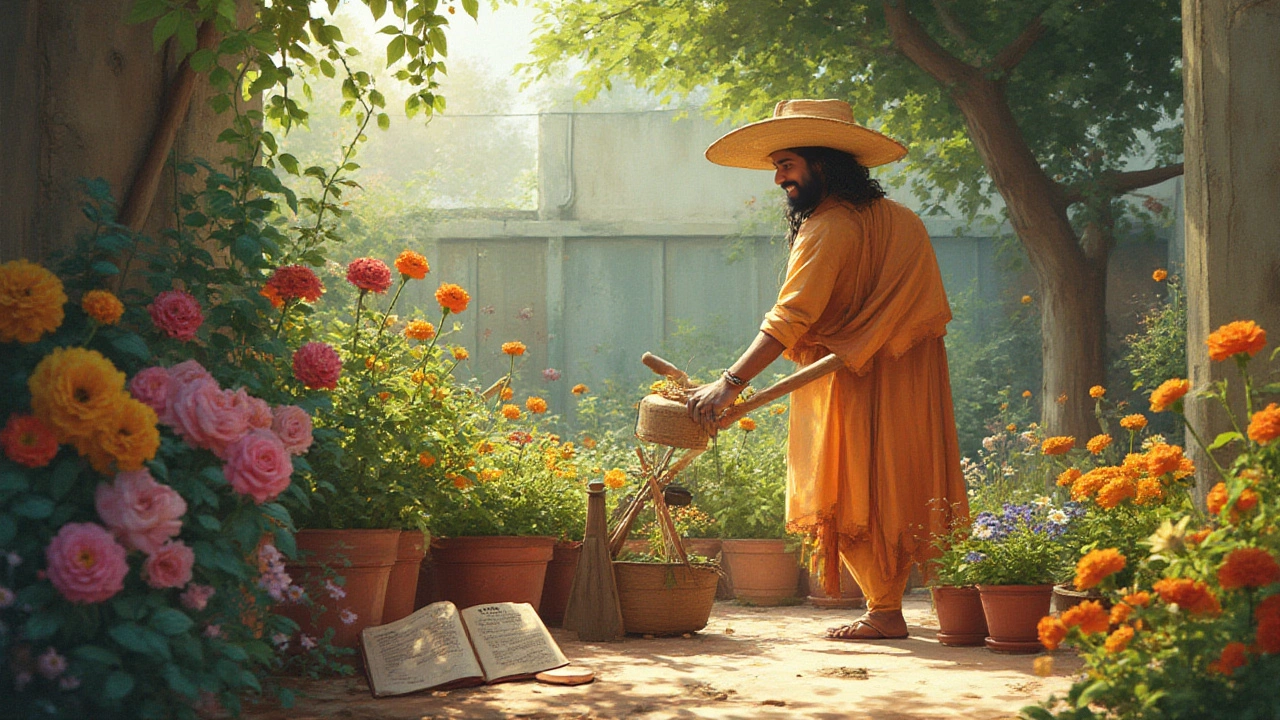
The Most Beautiful Flower? It's Personal
At the end of the day, no one can really say what the most beautiful flower is for everyone. Roses may rule on Valentine’s Day, and cherry blossoms may bring cities together, but sometimes, the most perfect bloom is the one that reminds you of someone, or the seed you planted that finally bloomed after months of care. My wife Liana’s favorite flower is the humble daisy. To her, it’s always been a sign of optimism. Our neighbor across the street will fight anyone who says anything is better than a stargazer lily. And honestly, there’s a kind of beauty in that fierce loyalty to a flower.
If you’re ever stumped on what to grow, ask yourself—what makes me stop and stare? Is it the color, the shape, the scent, or just the memories attached? The answer is never wrong. Gardeners argue about the classics: roses for elegance, orchids for rarity, tulips for simplicity, sunflowers for cheer. Landscape pros might lean toward bold tropical flowers, while city dwellers might fall for the first crocus peeking through snow.
Plants live and bloom on their schedule, not ours. A tree peony might only flower for a week, but those seven days can be absolutely unforgettable. Sometimes, you fall in love with something new every year. That shifting, changeable definition is what keeps gardening endlessly fascinating.
So, what’s the most beautiful flower in the world? The only honest answer: It’s the flower that means something to you.
